Links to Sections on this Page:
Characteristics of Steppe Society
From Antiquity to Mongol Empire
The Eurasian Steppe is sparsely populated. Compared to other regions, the land is not suitable for large scale agricultural activities. Historically it was home to nomads who moved from one place to another. However, on a per capita basis the people in this region had oversized impacts on the world.
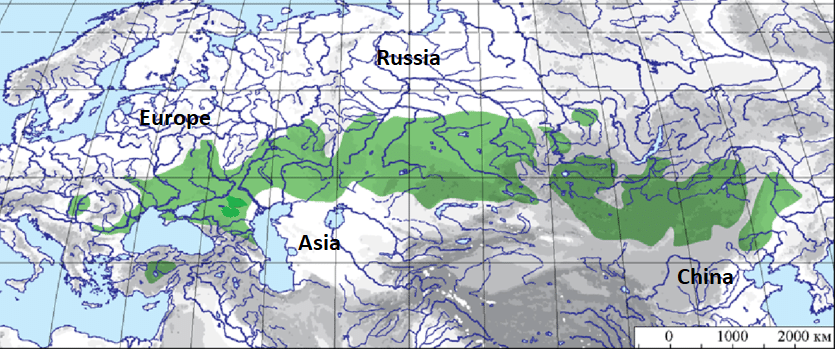
These are some of the impacts:
(1) Although it is hard to be completely sure about ancient history, many historians and linguists believe that the Indo-European Languages originated from the Steppe. This language is used by about 45% of the world’s population today – by far the highest of any language family.
(2) Many people believe that a group of people who originally lived in the Steppe and then migrated in prehistoric time to northern India subcontinent and Iranian plateau. They brought their culture, especially their religion, to these regions and greatly influenced Hinduism in India and Zoroastrianism in Iran. Today, Hinduism is practiced by the majority of Indians, and its followers comprise about 16% of the global population. Although most Iranians are now Muslims, Zoroastrianism was once the state religion of Iran.
(3) Kings of the Achaemenid Empire and Sassanian Empire considered themselves decedents of Aryan, a group of people originated in the Eurasian Steppe. The Achaemenid Empire (550-330 BCE) was the largest that the ancient world had seen up to its time, extending from Anatolia (present-day Turkey) and Egypt, across western Asia, through Central Asia and reached the Indus Valley of India in the east.
(4) Let us not forget the Mongol Empire of Genghis Khan. The Mongol Empire is the largest contiguous land empire in history. It is the second largest empire in world history, second only to the British Empire.
(5) People in the Steppe were great traders. They created the Silk Road, which connects China to Europe. The Silk Road was not only important for trade, it also allowed technology, cultures and ideas to spread from one place to another. Let us look at a couple of examples. China had invented silk and paper making. Both inventions spread to other places through the Silk Road. There is a story about a young princess who smuggled to Khotan, an ancient country along the Silk Road, mulberry seeds and eggs of the silk moth by hiding them in her headdress. As a result, people in Khotan were able to make silk themselves instead of buying from China. Below is a portion of a painting found in a city on the Silk Road to depict the story -- in the painting a woman at the left points to the headdress of the princess with a halo:

Another example is the spread of religions. We all know about Buddhism that spread from India to China. Christianity also spread to China through the Silk Road. Long before the Protestant and Catholic missionaries arrived in China, another branch of Christianity, the Church of the East, had already spread to China. Below is the top part of the Xi'an Stele erected in year 781 that documents the meeting of a church missionary named Alopen with the Chinese Emperor Tang Taizong in year 635. This is almost 1,000 years before the arrival of Italian Catholic missionary Matteo Ricci in 1582.
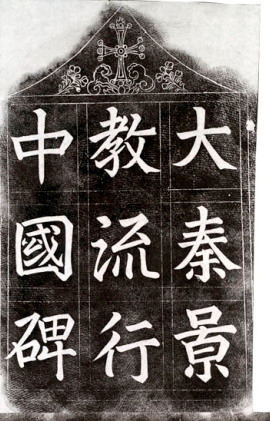
Characteristics of Steppe Society
Geographically, a steppe is a vast semiarid grass-covered plain. It is suitable for nomadic life instead of sedentary living. Thus, the historic development of the nomadic people are different than those of settled societies. Here are some of the characteristics of Steppe people:
(1) After a power struggle the defeated group often did not submit to the dominion of the winning group and could easily flee to other areas of the steppe. The defeated group could find a weaker target and form an empire elsewhere or regroup to later defeat the previous winning group.
(2) A process in the growth of a group was the elevation of a khagan, which signified a claim to independent power. This group needed a new name that would give all its initial followers a sense of identity. The khaganate often took prestigious name but that did not necessarily denote any direct affiliation to or descendant from groups of the same name.
(3) The need for frequent movement means that women needed to do work and develop skills (such as horse-riding) that, in a sedentary society, would be performed exclusively by men. Frequent fighting among nomadic groups means that women needed to manage the affairs of the group when men were out fighting. As a result, the political power of nomadic women far exceeded women in sedentary societies. In some nomadic groups physically strong women even belonged to the warrior class and engaged in fighting to defend the group. Below is a 4th century CE mosaic emblema showing a female warrior riding a horse and fighting with a man warrior.
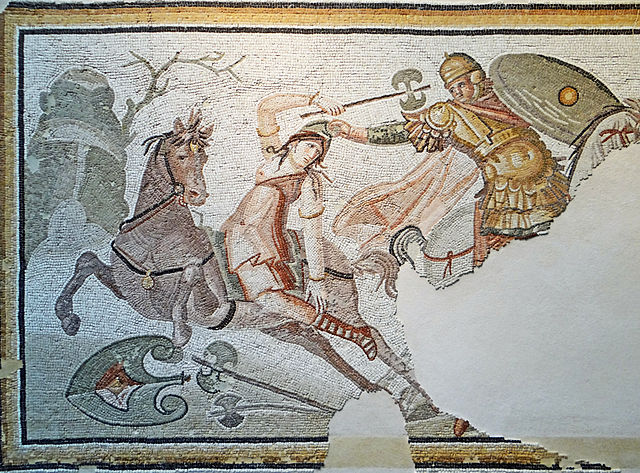
(4) After controlling and occupying a sedentary society for a significant period of time, the nomadic people often enjoyed the stable life and assimilated to the sedentary society.
(5) Because of the fluid nature of the nomadic groups, they did not keep records of their history. We know about them indirectly through the historic records of their neighboring sedentary societies. These records are mostly biased against the nomadic groups. Recently, there were archaeological and genetic studies. However, the results are often controversial. Sometimes national pride and politics interfere with the interpretation of the results.
Below are three articles about people in the Steppe:
(1) Ancient Steppe Nomad Societies
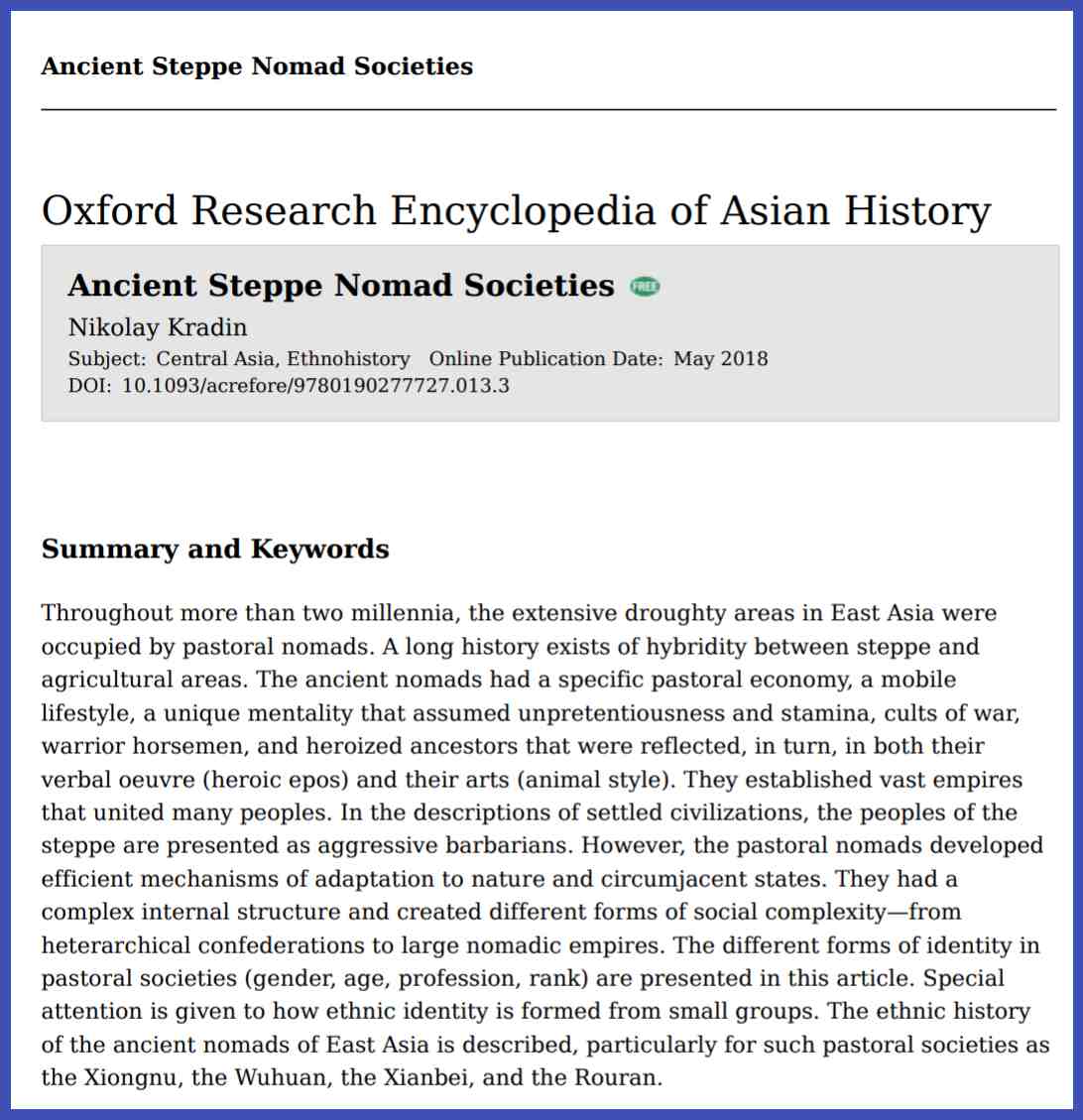
(2) The Role of Women in Military Organization of Nomads

(3) Early nomads of the Eastern Steppe and their tentative connections in the West

In our study of the Steppe, we separate the historic periods into (A) the pre-Mongol empire period, (B) Mongol empire and the resulting Khanates, and (C) modern time.
(A) From Antiquity to Mongol Empire
People lived in the Steppe and other places of the earth since pre-historic time. They interacted and affected each other in various ways. Sometimes they coexisted peacefully. But they also frequently fought against one another for land and resources. A few Steppe tribes occupied lands of the neighboring sedentary countries and ruled them until they were driven out. We look at these interactions here.
As pointed out above, people on the Steppe were mobile and formed different alliances at different times. As a result, cohabitation among different groups could be common. Thus it is difficult to ascertain the genetic composition of them. Instead of dividing the discussion by ethnic labels, we use geographic location as a division: west or east of Pamir Mountains. Below are two maps: (1) A map with the Pamir Mountains circled, and (2) a map of Asia showing the central location of Pamir:


To the west of the Pamir mountains, there were sedentary countries such as the Persian and Roman empires. This is an account of the interaction between people from the sedentary empires and the West Nomads living west of the Pamir Mountains.
To the east of the Pamir mountains, the main sedentary country was China. This is an account of the interaction between China and East Nomads living east of the Pamir Mountains.
We should also briefly look at the Turks. They built the first transcontinental empire running from Manchuria to the Black Sea (the Turkic Khaganates). Another reason we study the Turks is that they were the first nomadic people who left us historical sources written in their own language and script. They built many memorials and steles in which their “national history” was inscribed (such as the Orkhon inscriptions described on the Turkic Khaganates page). The Turkic national history were of course all Turk-centered and likely biased -- which is no different than the national history written by historians of other countries.
The Turks had extensive interactions with China during the 6th century CE. One value of the inscriptions lies in the fact that they provide us with a different perspective from that of the Chinese historians. One questions is: What kind of image of “China” can be found in the narratives of the early Turks?
In the Kül Tegin Inscription, the Turks castigated the dishonesty and cruelty of Chinese people (translated by Chen Hao of Shanghai University):
“The words of Chinese people were sweet and their treasures were fine (lit. soft). With sweet words and fine treasures they brought the distant people near. After [the distant people] had settled nearby, [the Chinese people] would think of bad ideas. They did not let the truly wise men and truly brave men succeed (lit. to walk, march). If one man committed a crime, [the Chinese] would not spare his clan, his relatives and even his children.”
This can be compared to Chinese historians who used words such as Yi, Man, Rong and Di to describe their neighboring ethnic groups in the four sides from east to north. All of these words have animalistic and barbarian connotations in one way or another. For example, the Chinese pictographic character for Di has a symbol "犭" which indicates a dog. Similarly, European historians viewed the behavior of the Steppe people as "barbaric."
According to Chen Hao, in the Turkic inscriptions China was called neither “China” nor the self-designations for contemporary dynasties (“Sui” and “Tang”). Rather, it was called “Tabgach” by the Turks. Tabgach refers to the Tuoba, a subgroup of the Xianbei tribe of the Steppe.
These are examples showing that we should be careful in evaluating the historic accounts of the Steppe people from history books of the sedentary societies.
When Genghis Khan died in 1227 CE he built a vast empire. Below is a map of the Mongol empire in 1227 (present-day location names are in black):

Before he died, he arranged for the Mongol Empire to be divided amongst his four sons, including Jochi, the eldest who died six months before Genghis Khan. Jochi's portion was distributed to his sons. He designated his third son, Ogedei (1186-1241), to be the heir and second Great Khan of the Mongol empire. He gave his second son Chagatai (1183-1242) the area that was roughly the former Qara Khitai, conquered in 1217 CE. The fourth son, Tolui (1191-1232), inherited the Mongol homeland of Mongolia. He gave the two sons of Jochi the north west part of the empire near Europe.
Under the leadership of Ogedei and his successors, the territories of the empire continued to expand. Below is a map of the empire in 1260 CE. The empire was divided into the empire of the Great Khan, Chagatai, Ilkhanate (Il-Khan), and Golden Horde:

Looking at the eastern side of the territories and compared with the map of 1227 CE, Tibet, Korea, and the northern portion of China were added. At the southwest side, the territories of the empire extended to the boundary of India, the whole Iran, and all the way to the present-day Turkey. At the northwest side, the empire controlled part of present-day Ukraine and areas between Caspian Sea and Black Sea.
The expansion did not stop until about 30 years later. Below is a map of the empire around 1290 CE:
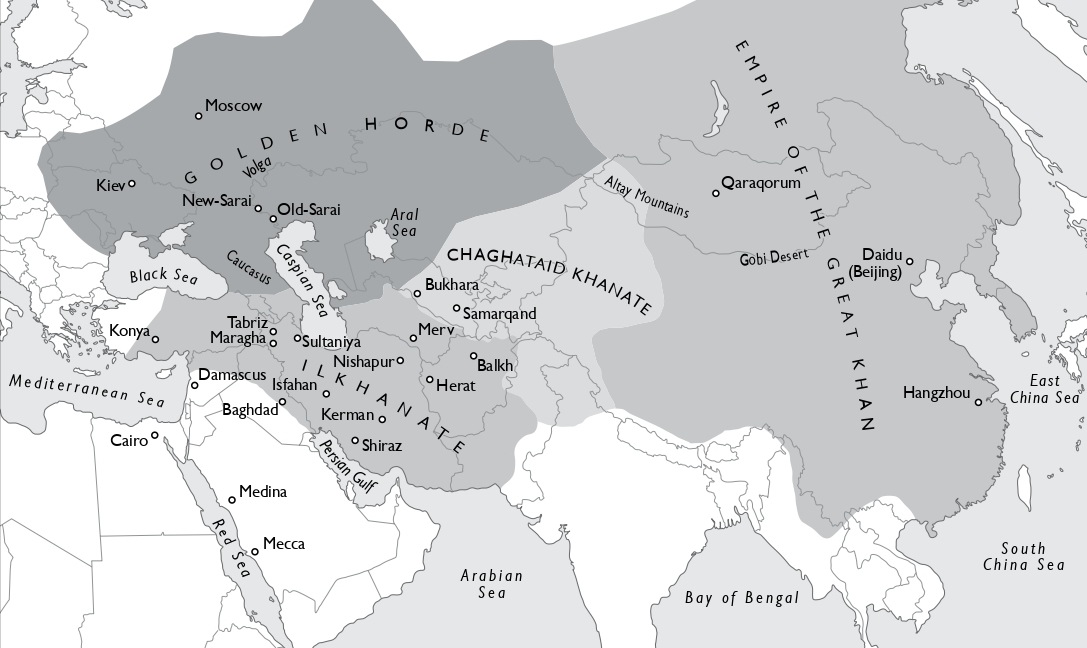
In the east the Mongol empire now included all of China, Korea and northwest corner of India. In the west, the territories included Ukraine, parts of Eastern Europe and a big part of Russia (including the present-day capitol Moscow). It was the largest contiguous land empire in history.
Most of the Khanates were short-lived and lasted for about a hundred years. The exception is the Golden Horde, which lasted for about two hundred years. We will briefly describe the two largest Khanates on separate pages: the Empire of the Great Khan (Yuan Dynasty) and the Golden Horde.
Below is a book on the Mongol Empire:
The Mongol Empire: Its Rise and Legacy (file size: about 12 MB)
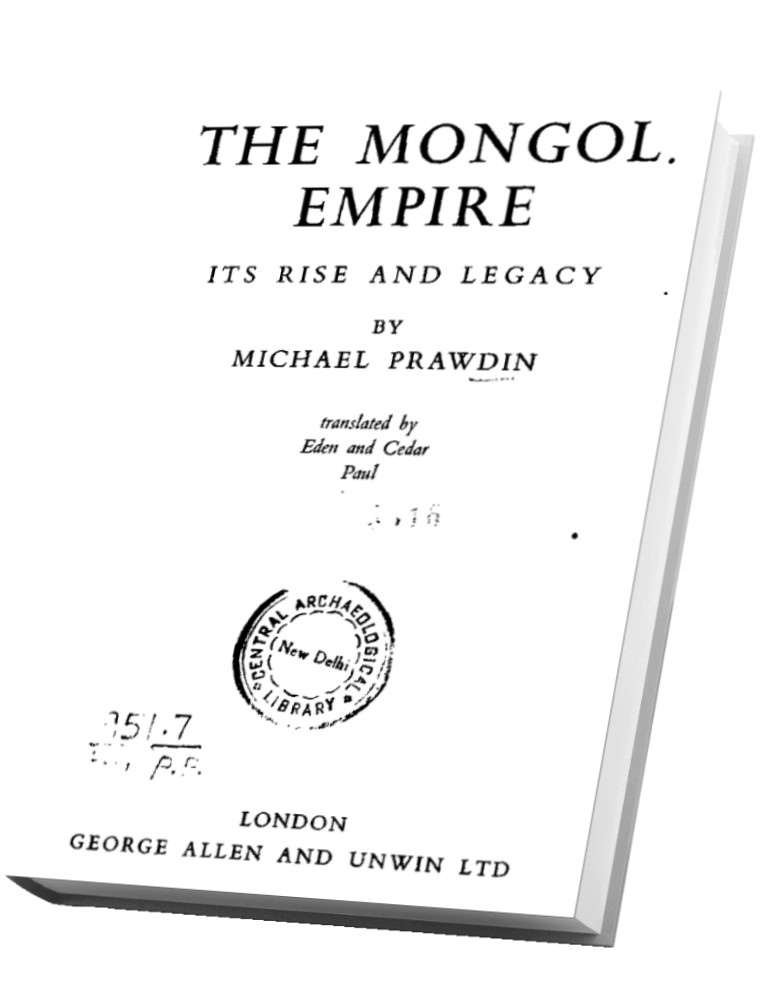
After the collapse of the Mongol empire, many small countries were formed in the territories of the former Mongol empire. Generally they were either small or not stable and new countries were formed all the time. Thus it would not be informative to study them. This situation was changed by two major countries that altered the geographic map:
(1) Qing dynasty of China.
The Qing dynasty emerged from the Khanate of Later Jin (1616–1636) founded by the Jianzhou Jurchen chieftain Nurhaci. The name “Jin” was derived from the former Jurchen-led Jin dynasty which ruled northern China during the 12th and 13th century CE. Nurhaci unified the Jurchen tribes and established a strong army. Nurhaci died in 1626. His son, Hong Taiji, entered China and proclaimed the formation of the Qing dynasty in 1636. The Ming dynasty of China was toppled in 1646.
The Qing dynasty continued to expand its territories. It conquered Steppe countries along the portion of Silk Road east of the Pamir Mountains (see the map of the mountains above). As a result, the eastern portion of the Steppe was consolidated and under Qing rule. Below is a map of the Qing dynasty with approximate areas of conquered Steppe countries in green:

The Qing dynasty collapsed in 1912. One of the Steppe countries, Mongolia, declared independent.
(2) Russian Empire
Starting from 1500 CE the Tsardom of Muscovy (which later became the Tsardom of Russia) conquered a large part of the Golden Horde and other remnants of the Mongol empire in Siberia. In 1721 Russia emerged as a new empire, the Russian Empire, after concluding the Treaty of Nystad with the Swedish empire. It modernized itself to become a power in European affairs. After that it embarked on a strategy of territorial expansion in Central Asia. In 1847 the Russia army conquered the Kazakh Khanate, which ruled the present-day Kazakhstan. By 1895 Russia had captured most of Central Asia. Below is a map of the Russian Empire showing the expansion of its territories:
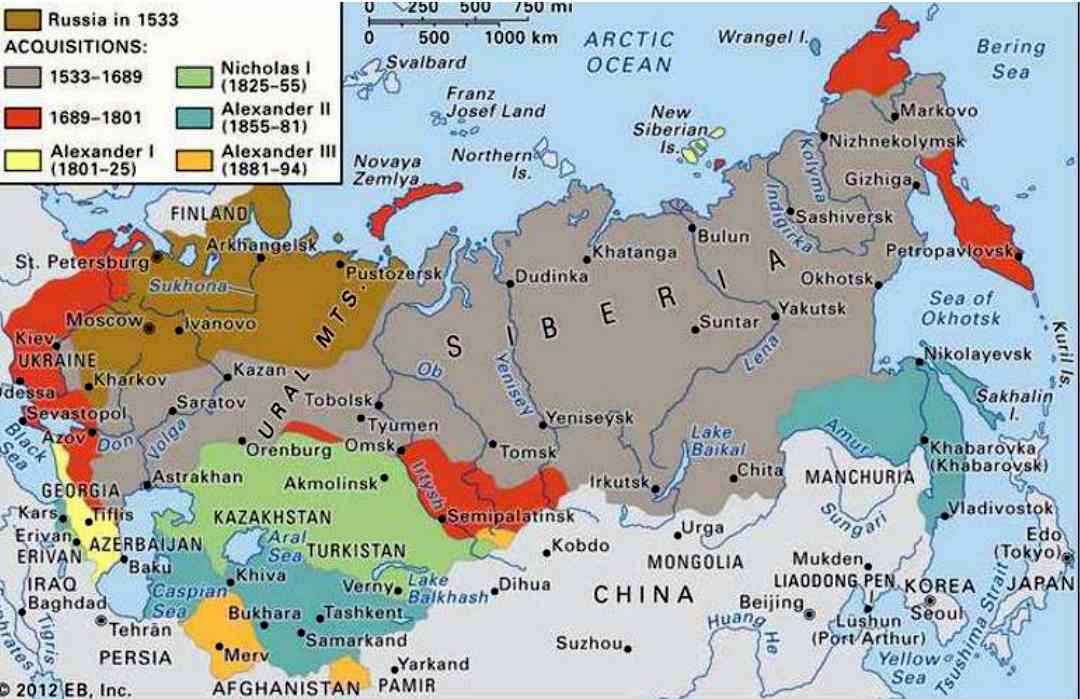
In 1917 the Russian empire collapsed as a result of the Bolshevik Revolution. The territories of the Central Asia were incorporated into the Soviet Union (USSR). The Soviet Union collapsed in 1991. Several countries in Central Asia declared independent.
Below are a few publications about the Steppe countries:
Central Asia countries:
Kazakhstan, Kyrgyzstan, Tajikistan, Turkmenistan and Uzbekistan

Central Asia — twenty-five years after the breakup of the USSR
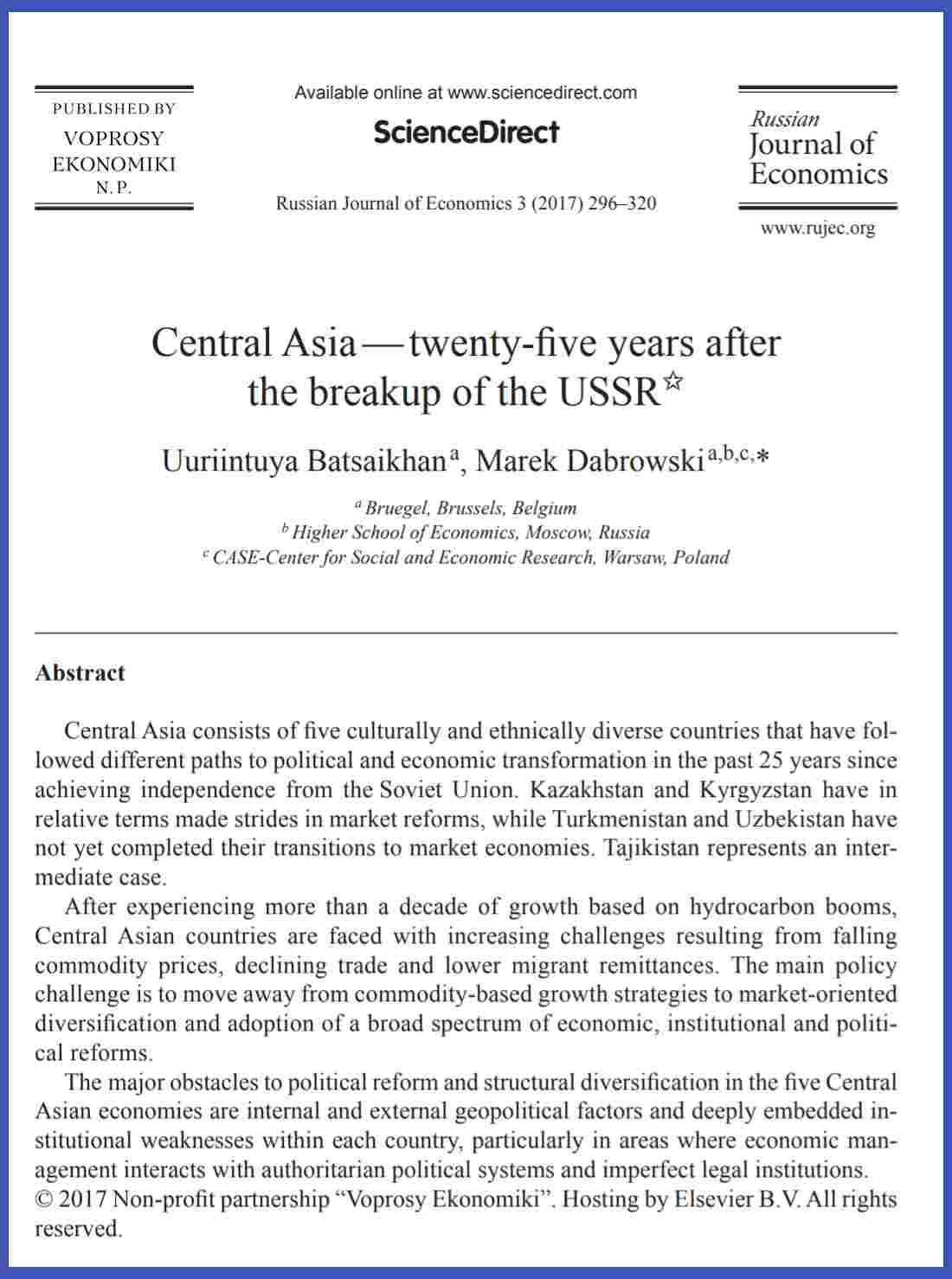
Kyrgyzstan

Kazakhstan

Mongolia
Climate Risk Country Profile: Mongolia
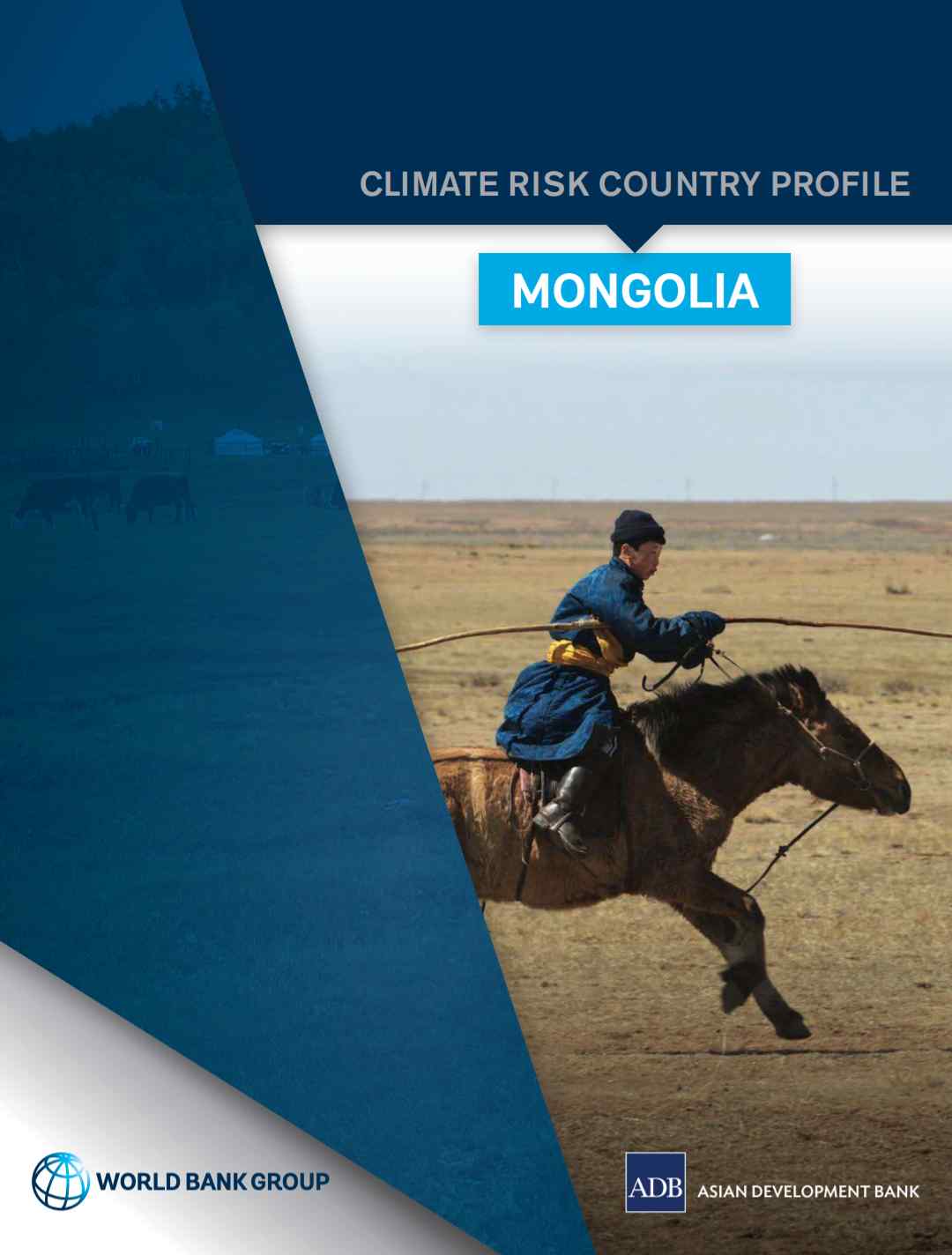
Primary Health Care Systems Comprehensive Case Study from Mongolia

Other Topic:
Armenia – Georgia – Islam: A Need to Break Taboos in the Study of Medieval Architecture

Below are three volumes of a book series on Central Asia (additional volumes will be uploaded when available):
History of Civilizations of Central Asia: The dawn of civilization: earliest times to 700 BC (file size: about 19 MB)

History of Civilizations of Central Asia: The development of sedentary and nomadic civilizations 700 BC to AD 250 (file size: about 30 MB)

History of Civilizations of Central Asia: The crossroads of civilization AD 250 to 750 (file size: about 11 MB)
